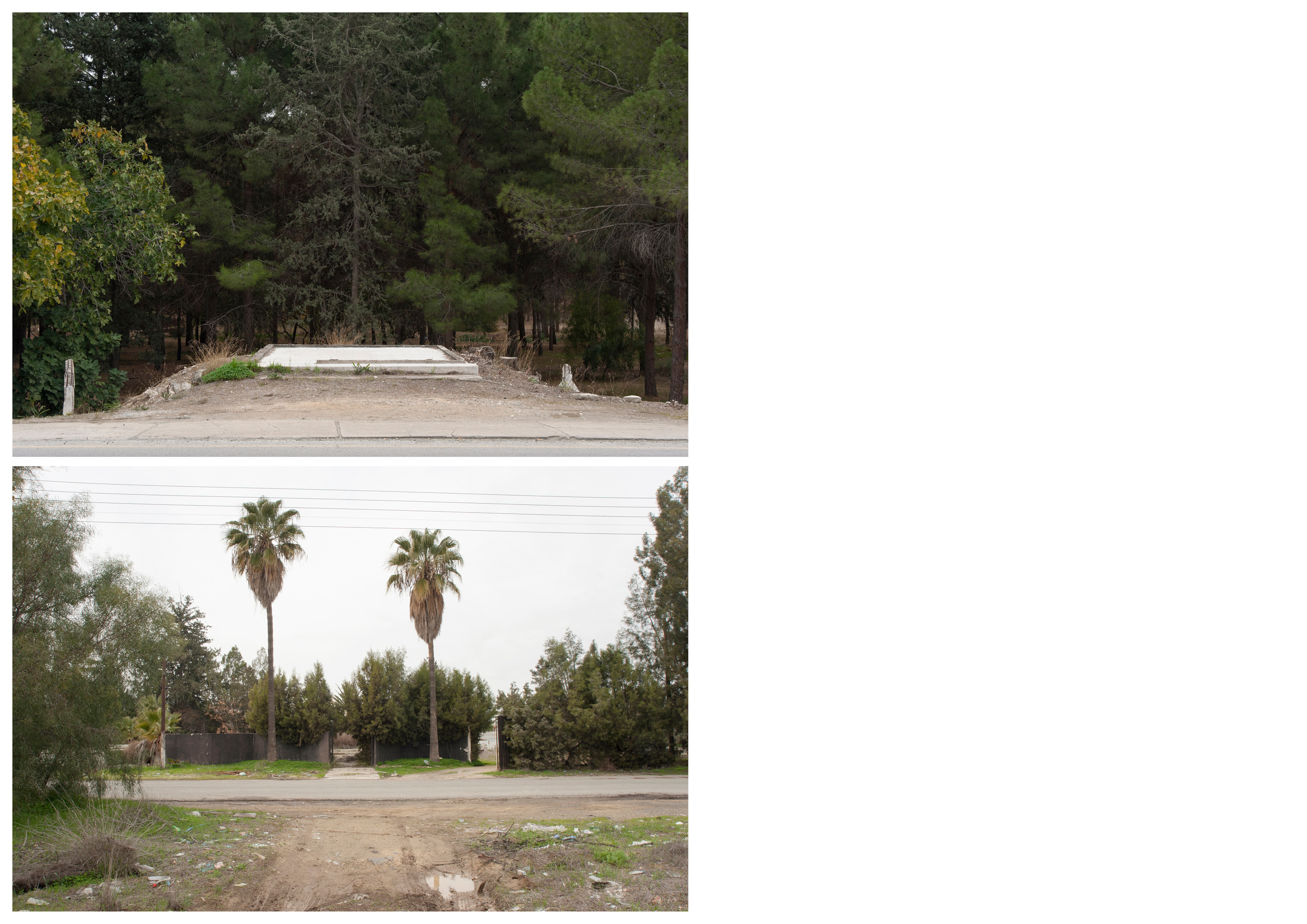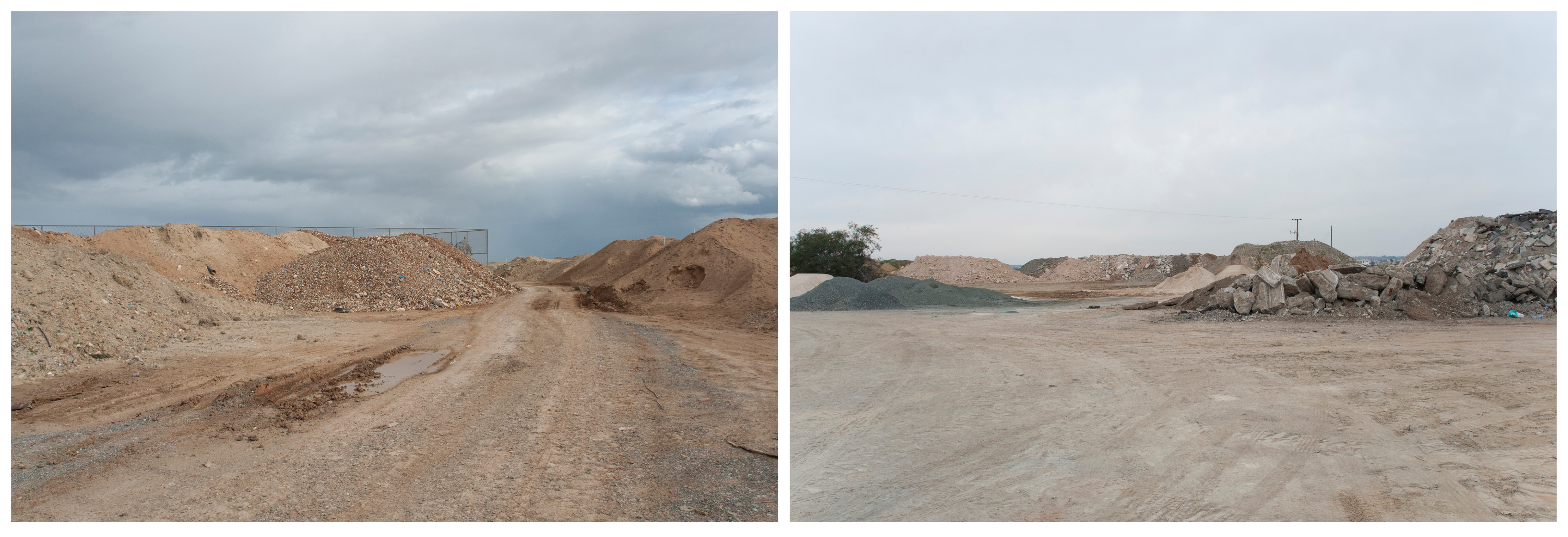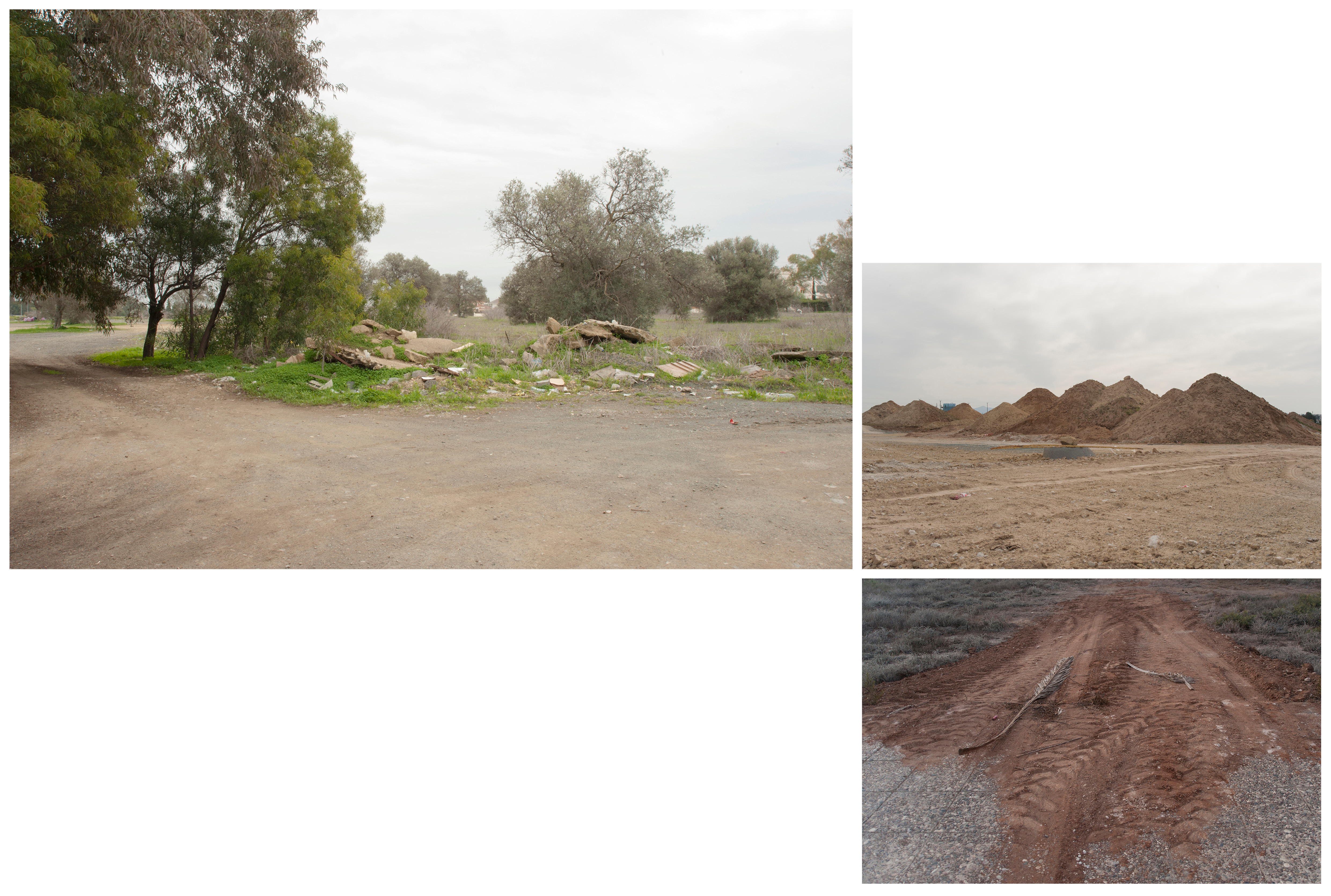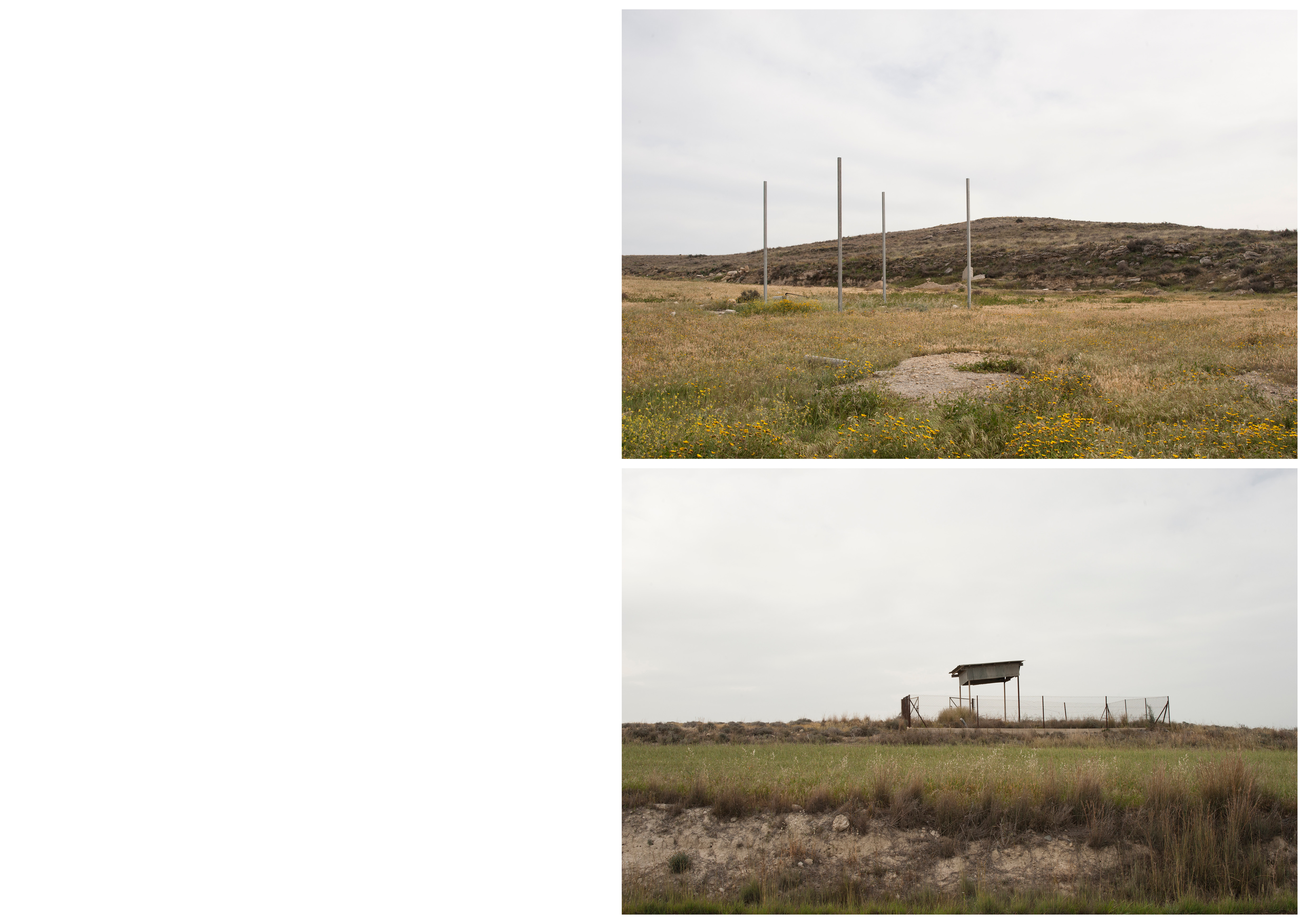















Towards an Eastern Landfall, 2016-Ongoing
archival pigment prints, dimensions variable
archival pigment prints, dimensions variable
Towards an Eastern
Landfall,
is an on-going photographic study of the Cypriot landscape. The project
documents the landscape of the island in investigating issues of land,
landscape, place and geography, while reflecting on questions of space,
locality, ownership, transformation and value. The images are created in parts
of the island described as the “peripheral landscape”, land- fragments which both
exemplify the geomorphological qualities of the “Mediterranean land”, while at
the same time are delineated by the edges of habitation—defined by disregard as
neither “valuable” or “beautiful” thus situating them in an indeterminate “natural
status of existence”.
Referencing a title-chapter of Lawrence Durrell’s 1957 travelogue-memoir “Bitter Lemons” 1 which acts as a contextual point of departure in viewing this “exotic land”, the work constructs a documentation of the Cypriot land(s) in investigating inherent definitions that are historically, politically, or culturally ascribed onto the contested Cypriot landscape. Operating as a series of visual assemblages, the work attempts to examine the idea of the landscape as an act 2 through which—and onto which, social, historical, and cultural identities and/or discourses are formed, performed, and represented.
Referencing a title-chapter of Lawrence Durrell’s 1957 travelogue-memoir “Bitter Lemons” 1 which acts as a contextual point of departure in viewing this “exotic land”, the work constructs a documentation of the Cypriot land(s) in investigating inherent definitions that are historically, politically, or culturally ascribed onto the contested Cypriot landscape. Operating as a series of visual assemblages, the work attempts to examine the idea of the landscape as an act 2 through which—and onto which, social, historical, and cultural identities and/or discourses are formed, performed, and represented.
The
selected sites attest to the complex relationships and practices between the
inhabitants of the island and its landscape: cultural artifacts, vernacular
structures, utilitarian objects, artificial fragments, signs, physical
boundaries, and debris, consolidate with the natural elements in creating these
curious natural tableaux. These images do not simply present (or photographically
frame) the landscape, but rather evidentially refer to a number of actions associated
with the land: of restricting and defining, of claiming or abandoning, of
exploiting, of enclosing and guarding, of planning and of commemorating. They
point to a landscape that is both a represented and a presented space,
they point to multiple sites of visual appropriation and diverse
interpretations of what a landscape is.
[1] Durell, L., Bitter Lemons. London: Faber & Faber, 1957.
[2] This refers to W. J. T. Mitchell’s Landscape & Power, in which he suggests “we think of landscape, not as an object to be seen or a text to be read, but as a process by which social and subjective identities are formed”.
[1] Durell, L., Bitter Lemons. London: Faber & Faber, 1957.
[2] This refers to W. J. T. Mitchell’s Landscape & Power, in which he suggests “we think of landscape, not as an object to be seen or a text to be read, but as a process by which social and subjective identities are formed”.